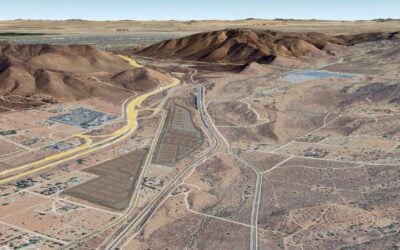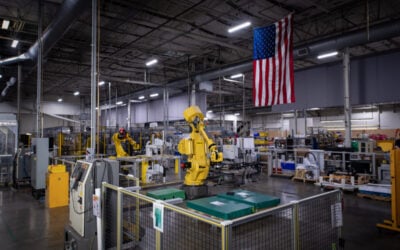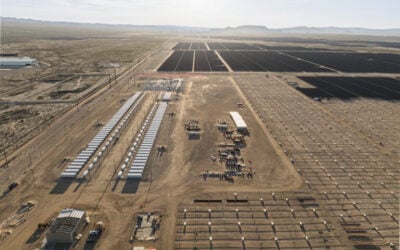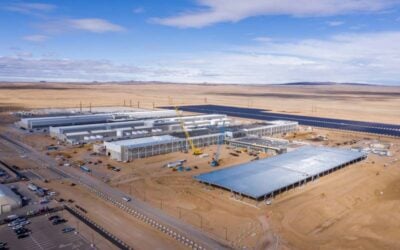
The California High-Speed Rail Authority (CHSRA) has commenced the permitting process for a 265MWh hybrid solar and BESS project that will provide a primary source of power and act as backup for a portion of the first phase of California’s High-Speed Rail project running between Merced and Bakersfield.
The commencement of permitting for the hybrid resource solar-plus-storage project comes at a troubling time for the rail project after it recently faced huge scrutiny from the Trump Administration following extensive delays and rising costs.
Enjoy 12 months of exclusive analysis
- Regular insight and analysis of the industry’s biggest developments
- In-depth interviews with the industry’s leading figures
- Annual digital subscription to the PV Tech Power journal
- Discounts on Solar Media’s portfolio of events, in-person and virtual
Full environmental review for Central Valley Solar and BESS
On 18 February 2025 and pursuant to the California Environmental Quality Act’s (CEQA’s) review process, the CHSRA published a notice of preparation (NOP) outlining its intentions to conduct a full environmental review of the Central Valley Solar and BESS project.
The issuance of a NOP not only initiates the CEQA review process, but also invites feedback from the public and stakeholders over the scope of CHSRA’s impending environmental impact report (EIR). Anyone wanting to submit a comment on the scope of the EIR has until 8 April 2025 to do so.
As recently reported by Energy-Storage.news, RAI Energy is also at a similar point in the permitting process for a huge 3.2GWh solar and BESS project located in Imperial County, California.
265MWh of BESS across four different sites in Central Valley
The Central Valley solar and BESS project will be split across four California High-Speed Rail Authority-owned sites dotted along the Merced-Bakersfield route at different traction power substations (TPSs), connecting to the California Independent System Operator (CAISO) network to “fully support the energy needs of the rail system”.
Details of the four battery storage systems, which are expected to connect to the grid via transmission lines owned by Pacific Gas & Electric (PG&E), are outlined below:
| TPS Number | County | BESS capacity (MWh) | Number of battery modules | Approximate location |
| 7 | Merced | 75 | 19 | 37.180777, -120.330634 |
| 9 | Fresno | 60 | 15 | 36.462644, -119.651254 |
| 10 | Kings | 50 | 13 | 36.243269, -119.576160 |
| 12 | Kern | 80 | 20 | 35.532337, -119.306339 |
The CHSRA stated it will utilise lithium iron phosphate (LFP) battery technology for the Central Valley project, which is the same technology utilised by the majority of utility-scale battery projects around the world nowadays. Although it expects the BESS units to last upwards of 25 years, the authority said it will replace the units every 15 years.
Construction on the Central Valley project is expected to commence next year and be completed during 2028.
Solar and BESS to reduce energy costs by 50-75%
As pledged in a 2024 sustainability report published by the CHSRA, the entirety of the rail project, which is expected to run for 494 miles between San Francisco and Los Angeles, will be powered by renewable energy, namely solar and BESS. There are also future plans for a second phase of development which would extend the project north to Sacramento and south as far as San Diego.
According to the report, the project will have enough solar and BESS to power the entire rail line with enough power leftover for a blackout of about six hours. Due to solar power’s inherent variability, the CHSRA plans to leverage the project’s grid connection by only purchasing energy from CAISO when it is “readily available and inexpensive”.
Through utilising power stored in the batteries from the solar farm during peak operating times, the CHSRA expects to reduce its energy costs by 50-75%.
Within the sustainability report, CHSRA states that it may be eligible to receive payment from CAISO for grid services, such as in the system operator’s day-ahead, real-time and ancillary services markets. The authority is also exploring the feasibility of including additional controllable loads within the project’s energy system such as electric vehicle charging.
Project subject to Trump Administration compliance review
Despite the CHSRA and California Governor Gavin Newsom holding an event in early January in Kern County celebrating the first steps being taken in the track and systems construction process, the authority is now subject to a compliance review from the new Trump Administration.
In a 20 February 2025 letter from the US Department of Transportation’s Federal Railroad Administration, current CHSRA CEO Ian Choudri was made aware of the impending review and potential removal of federal funding.
In 2019, during Trump’s first term, the administration terminated US$929 million in federal funding for the project, which was then reinstated in 2021 by the Biden Administration, which then granted the CHSRA a further US$3.073 billion in funding during 2023.
In 2008, voters in California approved over US$9 billion in state bonds to fund construction of the high-speed rail project which was expected to be completed by 2020. However, after huge delays, the first 171-mile portion of track connecting Merced and Bakersfield isn’t expected to be completed until 2031, according to a recent report from the US Office of Inspector General.
According to the most recent CHSRA business plan, the entire high-speed rail is expected to cost anywhere in the region between US$88.55 billion – US$127.93 billion, which is considerably more than initial estimates of around US$33 billion.
Between July 2006 and June 2024, CHSRA has spent over US$13 billion on the project, which it claims has generated US$21.8 billion in economic activity and created approximately 109,000 job-years worth of employment.






